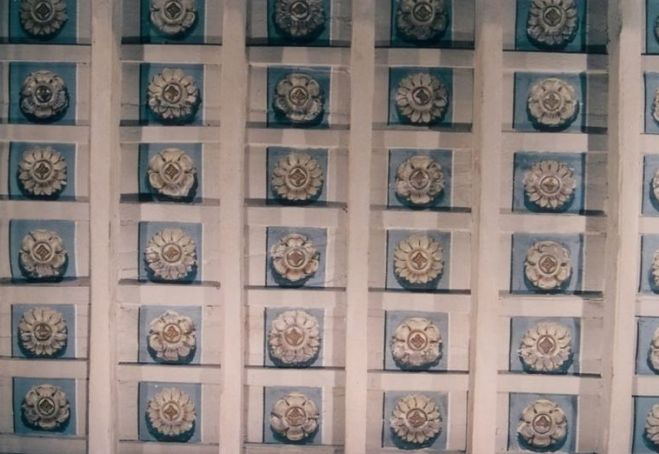Keats made the arduous journey to Rome hoping that the milder winter climate would cure his consumption, but within three months he was dead.
Mary Wilsey
This is a tale of two young men who travelled to Rome and took up lodgings in Piazza di Spagna. One of them had tuberculosis and thought a winter in Rome might give him a longer lease on life. The other was there to accompany his sick friend but he also made the trip from London because he thought it would benefit his career as an artist and win him a Royal Academy scholarship.
They arrived in Rome in mid-November 1820 after a long journey by sea from London to Naples and then overland to Rome. Just over three months later, on 23 February 1821, John Keats died in a small room on the second floor of Piazza di Spagna 26 with only his friend Joseph Severn at his side. He was just 25. It was a difficult and lonely death.
During the first few weeks after their arrival in Rome both men recovered their spirits after the difficult journey. Strangely Keats' doctor, Dr James Clark, was not worried so much about his patient's lungs as about his stomach and his acute depression. At Dr Clark's suggestion Keats hired a horse and managed to go riding and walking on the Pincio, making friends with a fellow consumptive from England.
Keats' sense of humour was beginning to return and he managed to make some caustic remarks about Pauline Borghese Bonaparte who was out riding with her entourage. Canova's reclining half naked statue of Napoleon's sister had recently gone on display. But he was so affronted by her eyeing up his riding companion that he avoided the Pincio to ramble the streets of Rome instead.
Things looked up to such an extent that Keats talked about starting a new poem to Sabrina, the water nymph of the river Severn (no accident in the name) who featured in both Edmund Spenser's The Faerie Queene and Milton's Comus. Severn set about trying to make contact with Canova and others in the artistic community. But at the beginning of December Keats had a haemorrhage and didn't leave the house again.
Warmer climate
Severn had little idea how difficult the next two and a half months would be. Keats on the other hand was clear about what was ahead although he had hoped initially that a warmer climate would delay the disease for a while longer. He had trained as an apothecary before dedicating himself to poetry. Keats had also nursed his mother and his brother Tom until they died of the same disease. He quite knowingly bought laudanum - a mix of opium, morphine and codeine frequently used at the time - before he set out from London. But Severn confiscated it fearing, rightly, that Keats would overdose and commit suicide.
Drastic measures
Dr Clark's cure was to put him on a drastic diet of anchovies – considered good for circulation and an anti-inflammatory – which along with the bloodletting to lower his blood pressure only made him weaker. From December onwards things went downhill and both Severn and Clark were understandably worried about Keats' desperate state of mind. Keats had not only left behind the love of his life Fanny Brawne in London but he also considered himself a failure as a poet after a series of bad reviews of his poem Endymion. He had little doubt at this stage that death was just a matter of time.
Coughing, bleeding, bloodletting, diarrhoea, a high temperature, a starvation diet ordered by Dr Clark, fits of uncontrollable anger plus suicide attempts were what Severn had to manage in the weeks ahead. Not to mention the hygiene problems two storeys up when there was no modern sanitation. The only heating in the cold Roman winter came from a small and smoking fireplace in Keats' bedroom. All this was made even worse by it being Christmas (Severn describes it as the "strangest and saddest he ever spent"). Nor was it possible any longer to hide the fact that Keats was dying from a contagious illness.

Severn knew that the Rome authorities had tough regulations against the spread of tuberculosis. And by this time the landlady must have realised that one of her lodgers was very ill. In the events of his death all the furnishings in Keats' room, and maybe also Severn's, would have to be stripped and burnt to avoid further infection. Severn's constant concern, in addition to his friend's illness, was how he would pay for the clean-up after Keats' death. The money they were relying on from England was blocked for a while because Keats' publisher considered that the two young men were spending too much.
A dismal Christmas
That Christmas was dismal. Severn and Clark were now Keats' sole carers. Letters arrived from England, also from Fanny Brawne, but Keats couldn't bear to open them. They were left unread with instructions to Severn to put them in Keats' coffin when he died. Severn was so busy nursing Keats that he was too exhausted to write home. However in a letter on 11 January to Fanny's mother, Mrs Brawne, he wrote:
“For three days I have never left him...What enrages me most is making a fire ̶ I blow ̶ blow for an hour ̶ the smoke comes fuming out ̶ my kettle falls over on the burning sticks ̶ no stove ̶ Keats calling me to be with him ̶ the fire catching my hands and the door bell ringing ̶ all these to one quite unused and not at all capable ̶ with the want of every proper material come not a little galling.”
Today standing in the Keats and Severn rooms in the Keats-Shelley Museum in Piazza di Spagna where the original fireplace is still intact, the force of the whole tragic scene comes streaming back.


The Keats Shelley200 bicentenary
The Keats-Shelley House is marking both the death of Keats and Percy Bysshe Shelley in a number of events which started early in 2020. There have already been poetry readings and a concert now visible on the Keats-Shelley House YouTube platform. A digital panoramic tour of the Keats-Shelley House in Piazza di Spagna with a personal guide is now online and there are a number of video stories planned about the life of the Romantic poets and the history of the museum. There will be an exhibition later this year exploring the importance of Shelley's poem Adonais, his elegy on the death of Keats. There will be a commemorative gala dinner at Palazzo Doria Pamphilj hopefully in October this year and a festival of contemporary poetry in Lerici to mark the drowning of Shelley there on 8 July 1822. Events are being postponed if necessary due to covid-19 but not cancelled. For details see website.
General Info
View on Map
The death of John Keats
Piazza di Spagna, 26, 00187 Roma RM, Italy

















